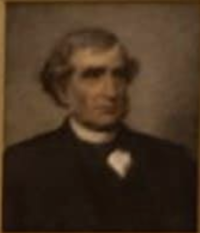Simulation Studies of an Ultraviolet Laser Absorption Imaging System
Introduction
To design practical engineering systems for modern energy and propulsion applications, such as rocket and jet propulsion systems, space reentry vehicles, and gas turbines, where extreme gas-dynamics often pose challenges on improving efficiency and ensuring system feasibility [1-3], it is critically important to inform practical designs with experimental insights of the thermochemical environment. Particularly, spatially resolved diagnostics of physical properties, such as temperature and concentrations of chemical species, are desired for the purpose of validating numerical simulations and chemical kinetic models [4]. In this context, an ultraviolet-laser-absorption-based imaging system becomes an attractive solution for providing 2D information on gas-dynamic environments of interest. An ultraviolet laser absorption imaging (UV-LAI) system is founded on the well-established principle of laser absorption spectroscopy (LAS), where magnitude of laser light attenuation at a certain wavelength is used to infer the concentration of absorbing chemical species [5]. The light attenuation arise from the resonance interaction between light and matter, which sees a molecule transitioning to a higher energy state when excited by light carrying energy that matches the energy gap of the transition. A fixed-wavelength, continuous-wave laser emitting in the UV region has the unique advantage of accessing strong electronic energy transitions of diatomic species, such as hydroxyl radical (OH) and nitric oxide (NO), important for high-temperature combustion and air chemistry [6]. This enables high signal-to-noise ratio (SNR) in the measured light attenuation, and therefore, improves the accuracy of the species concentration measurements. However, to enable accurate 2D measurements using the UV-LAI system, the impact of optical aberration and light refraction through the test gas on the interpretation of the final image needs to be well understood.

In this work, various simulation tools were utilized to perform system-wide simulations for an UV-LAI concept. The imaging system of interest, shown in Fig. 1-1, consists of a 226-nm (suitable for probing NO), continuous wave laser source, which is expanded by a beam expander before being passed through an absorbing test gas. The transmitted beam is then collected by a lens onto a camera sensor. Two types of optical design software, deploying sequential and non-sequential ray tracing, were explored, and the relative advantages of each type of ray tracing strategy were discussed. As a first attempt, Blender and PBRT were used to simulate the image response of a simple geometry consisting of two overlapping spherical bodies. A collimated source and a point source configuration were used. Then, Zemax was deployed to investigate the optical aberration of a beam expander. The real-lens effect of practical beam expander system was compared with an ideal paraxial system. LightTools was adopted to simulate the sensor illuminance resulted from the UV-LAI system. A spherical body was first used in a simplified source-gas-sensor configuration absent of a imaging lens and a beam expander. The impact of refraction and source light divergence angle on the final absorption image was investigated via parametric studies, which led to the optical design of a simple correction lens scheme to reduce measurement error. Finally, the image response from the whole UV-LAI system was simulated in LightTools with the Zemax-designed beam expander, and the result showed minimal impact of the real beam expander compared to a ideal paraxial system.
Background
Ultraviolet Laser Absorption Imaging

The UV-LAI system measures the attenuation of light through an absorbing medium deploying the same fundamental principle of LAS, which is illustrated in Fig. 2-1. Light attenuation at a certain wavelength is evaluated by absorbance (), which is defined as follows:
where is the background intensity absent of absorption, and is the transmitted intensity with absorption. In an imaging setup, a background image is recorded first, and then a separate absorption image is recorded by introducing the test gas. The signal recorded on each pixel of the background and absorption images was plugged into Eqn. 2-1 to compute the absorbance distribution.
To evaluate the error in the 2D absorbance measurement caused by optical aberration and refraction through the test gas in system-wide simulations, a ground truth reference is first produced by setting the refractive index of the test gas to be the same as that of the ambient gas in a perfectly collimated system. The background images were obtained by setting the optical density () of the test gas to zero. The optical density is defined as:
When simulating the absorbance response with refraction through the test gas, the test gas' refractive index is set to a value smaller than the ambient gas (representative of a high-temperature reacting gas-dynamic environment), and the background and absorption images were obtained by changing the test gas' optical density. Note that this approach still preserves the refraction of light through the test gas in the background image, allowing the direct impact of refraction to be studied through simulations. To achieve the equivalent effect in future practical experiments, the laser wavelength could be shifted slightly such that the test gas stops absorbing light.
With the absorbance signal measured from the background and absorption images, species mole fraction can be obtained via the Beer-Lambert relation [5]:
where is the total number density of the gas which can be calculated using ideal gas law in practical experiments; is the mole fraction of species , is the absorption cross section of species at wavelength and is obtained from a spectroscopic model of species in practical experiments; </math>L</math> is the absorption path length, which measures the distance that light travels within the absorbing test gas. In this work, only absorbance images were simulated and no additional steps were taken to calculate the species mole fraction.
Methods
Sequential vs. Non-Sequential Ray Tracing
Results
PBRT and Blender
Zemax
LightTools and CODE V
Conclusions
Appendix
You can write math equations as follows:
You can include images as follows (you will need to upload the image first using the toolbox on the left bar, using the "Upload file" link).














